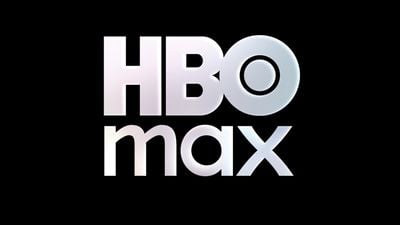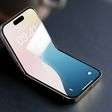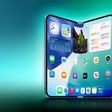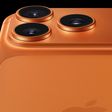Samsung today announced the launch of the Galaxy XR, a new mixed reality headset that will compete with the Apple Vision Pro. At $1,800, the Galaxy XR is $1,700 cheaper than the new M5 Vision Pro, but it is much more expensive than Meta's Quest VR devices.

Samsung says that its headset was created with a "human-centric design" that's meant to provide long-term comfort. The headset has a frame design that is supposed to distribute pressure across the forehead and the back of the head, providing support and minimizing facial discomfort. A detachable light shield offers deeper immersion by blocking out light, but the headset can be used without it. The headset weighs 545 grams (1.2 pounds) with the forehead cushion, so it is lighter than the Vision Pro. The Vision Pro with Dual Knit Band weighs between 750 and 800 grams.

Samsung included 4K micro-OLED screens with a resolution of 3,552 x 3,840 and a 109-degree horizontal field of view. There are 29 million total pixels with a 6.3-micron pixel pitch and 96 percent DCI-P3. There's a 72Hz default refresh rate, with 60Hz and 90Hz also available. Included cameras and sensors add support for hand and eye tracking.
The XR is powered by a Snapdragon XR2+ Gen 2 chip from Qualcomm. There are two high-resolution passthrough cameras, six world-facing tracking cameras, four eye-tracking cameras with iris recognition used for authentication, and a 6.5-megapixel camera for taking 3D photos and videos. The headset also includes five Inertial Measurement Units, a depth sensor, and a flicker sensor. Samsung is selling optical inserts for vision correction separately.
Other features include two 2-way speakers and a six microphone array, Wi-Fi 7 support, Bluetooth 5.4 integration, 16GB memory, and 256GB storage. Like the Vision Pro, the Galaxy XR has a separate battery pack with two hours of runtime (2.5 hours for video watching), but the headset can also be used while the battery is being charged.

The Galaxy XR headset runs the Android XR platform, which Samsung developed alongside Google and Qualcomm. Google's Gemini AI is integrated at a system level, so it can understand the user's surroundings with the Galaxy XR cameras and microphones. According to Samsung, Gemini in the Galaxy XR is designed to feel like a "new type of AI companion."
Here's some of what Samsung says the headset can do:
- Gemini in Google Maps can be used to navigate to any location and users can ask for personalized suggestions about nearby places.
- Users can use natural language to ask Gemini to find the content they want to see on YouTube and get more information about the video they're watching.
- With a passthrough mode, users can see the physical world and draw a circle with their hand to search for information about any object in their field of view.
- 2D photos and videos can be auto-spatialized to add depth and dimension, similar to Apple's spatial photos and videos.
- Shows can be streamed on a 4K screen that feels like a personal theater.
- Sports fans can watch multiple games at the same time.
- With XR games, Gemini offers real-time coaching and tips.
Samsung is working on multiple form factors for future products, including AI glasses. Alongside Google, Samsung has teamed up with Warby Parker for its future smart glasses products, and it is also working with South Korean glasses brand Gentle Monster.

The Galaxy XR is available for purchase in the U.S. starting today from the Samsung website and Samsung Experience Stores. It is priced at $1,799.99, and Samsung has a 24-month financing option.
Early adopters will receive 12 months of access to Google AI Pro, YouTube Premium, and Google Play Pass. Samsung is also selling a Galaxy XR Travel Case and Galaxy XR Controller for $250 each.







 Image Credit: The Verge
Image Credit: The Verge
 Huawei's MateBook Fold
Huawei's MateBook Fold






 Image Credit: Six Colors
Image Credit: Six Colors Note: MacRumors is an affiliate partner with Best Buy. When you click a link and make a purchase, we may receive a small payment, which helps us keep the site running.
Note: MacRumors is an affiliate partner with Best Buy. When you click a link and make a purchase, we may receive a small payment, which helps us keep the site running.















